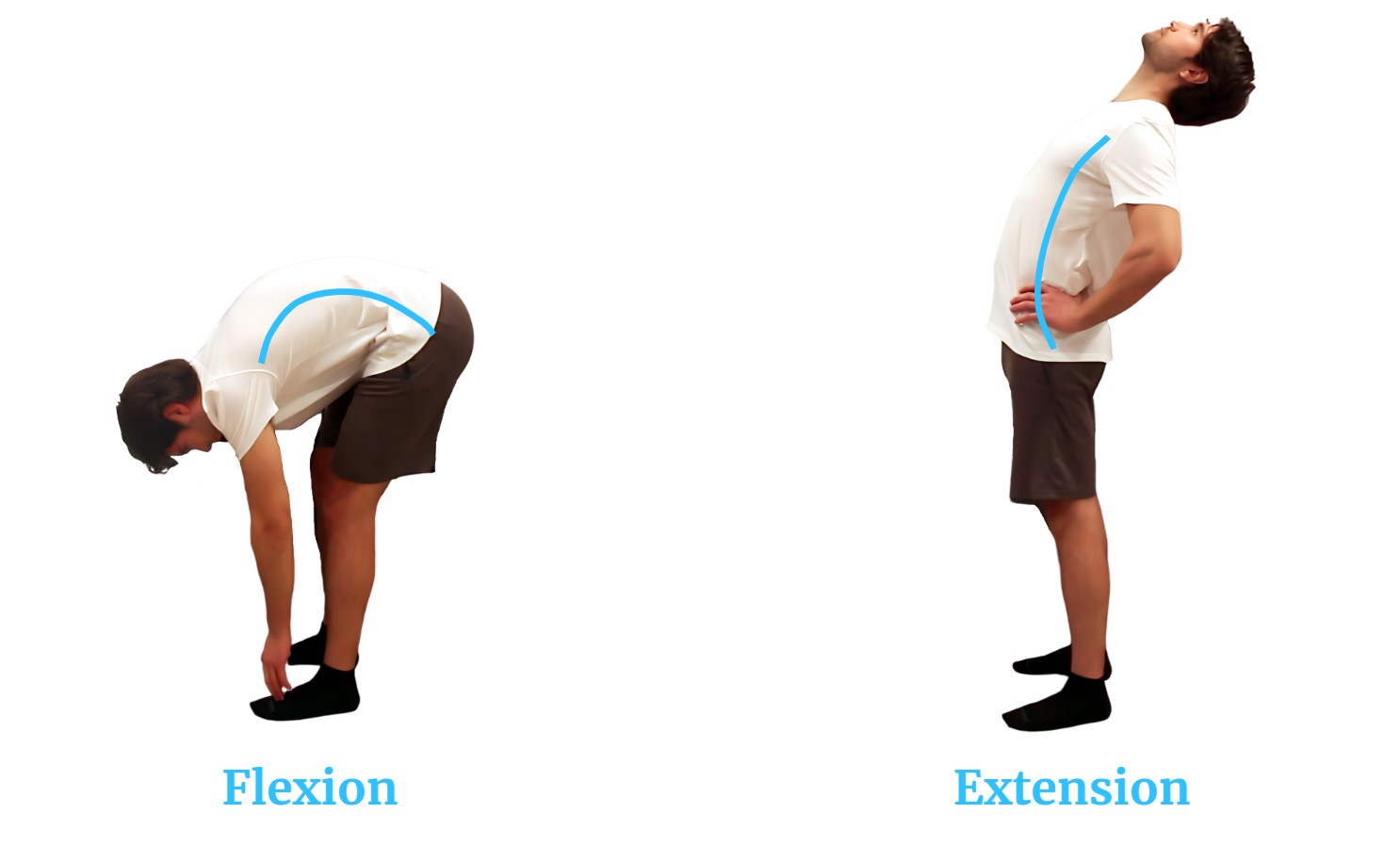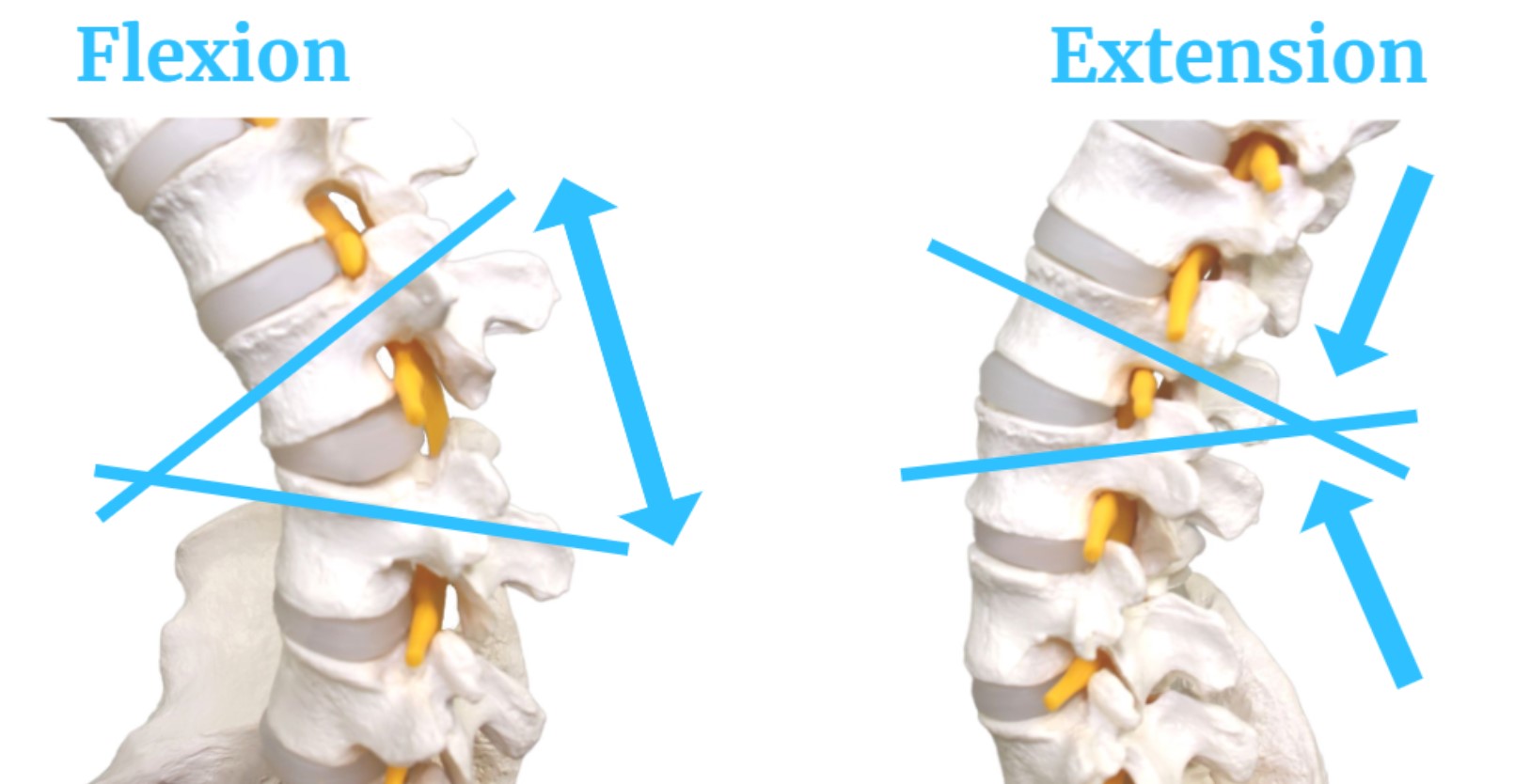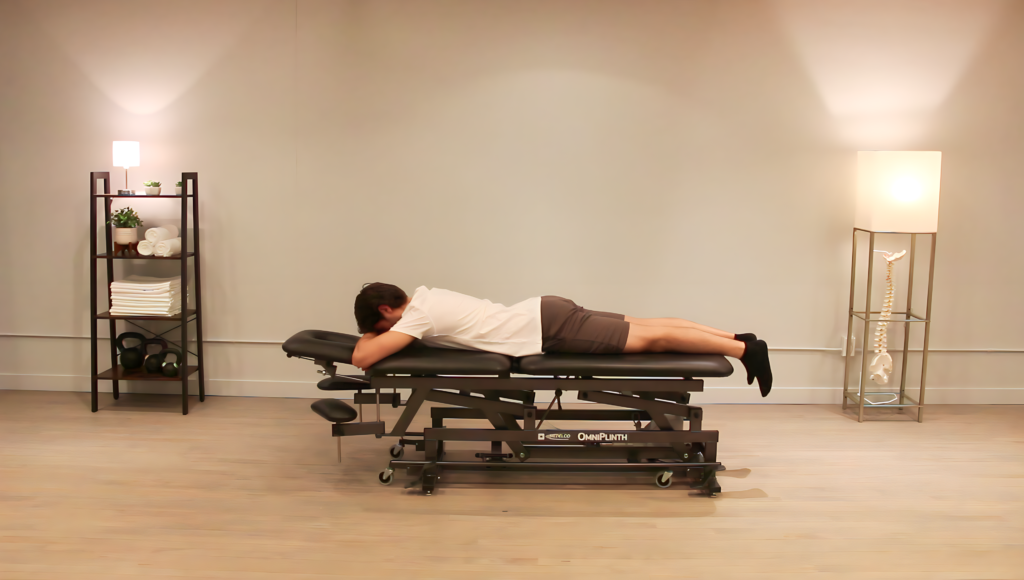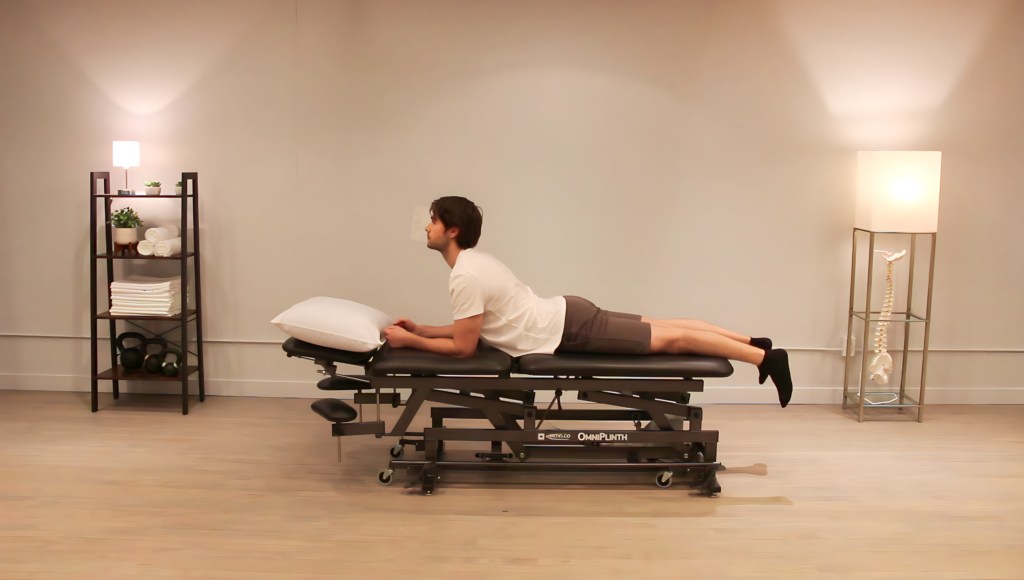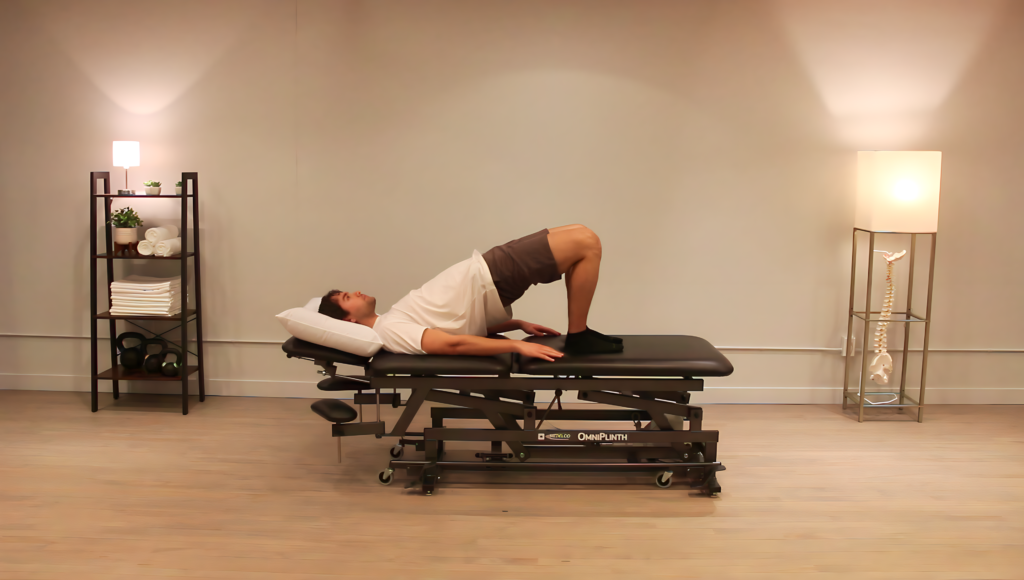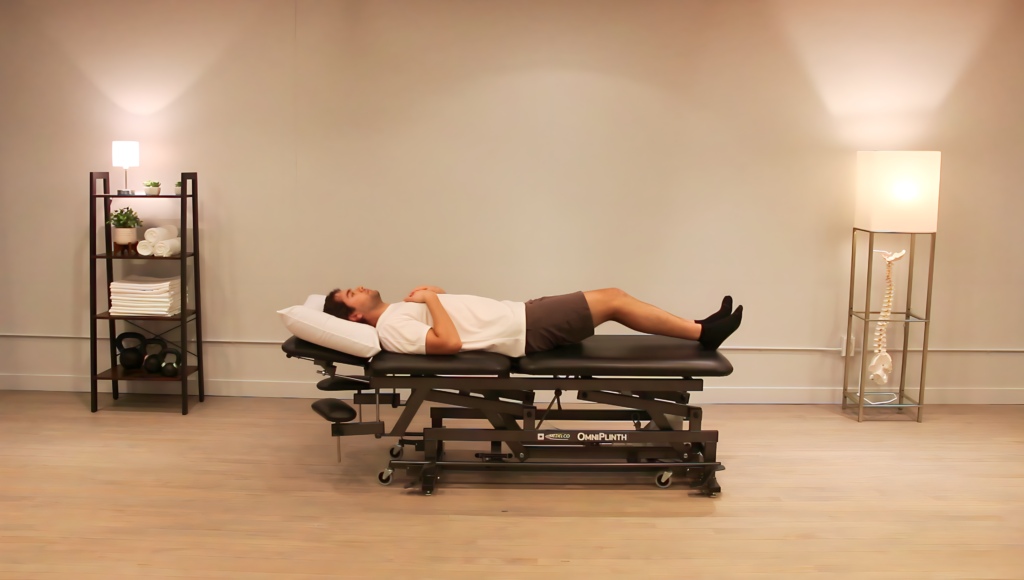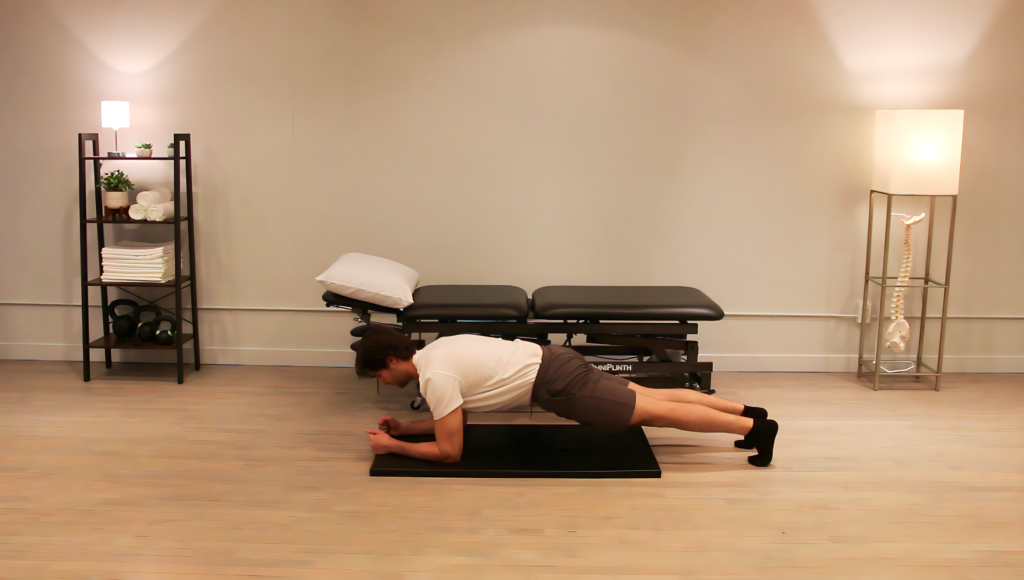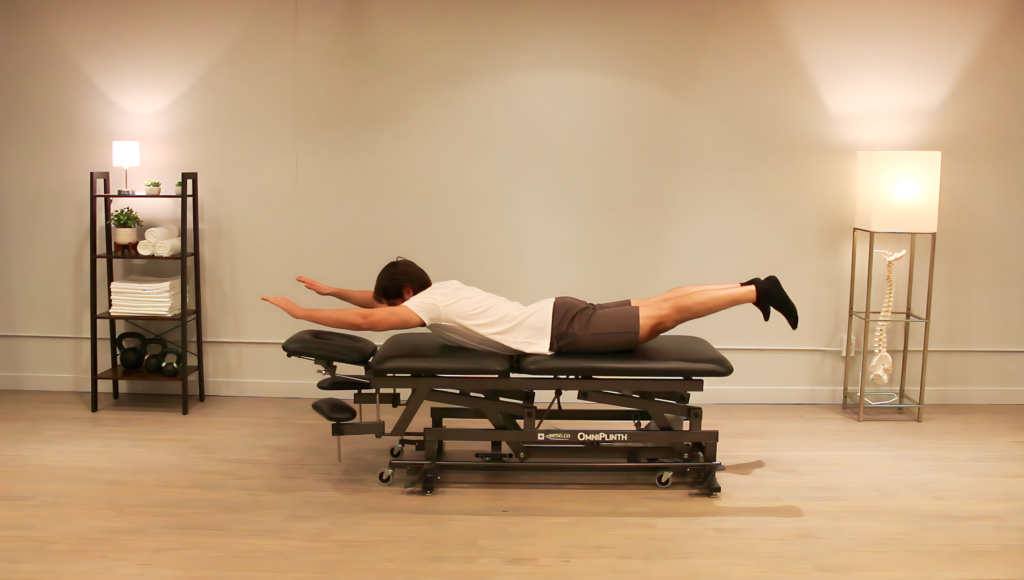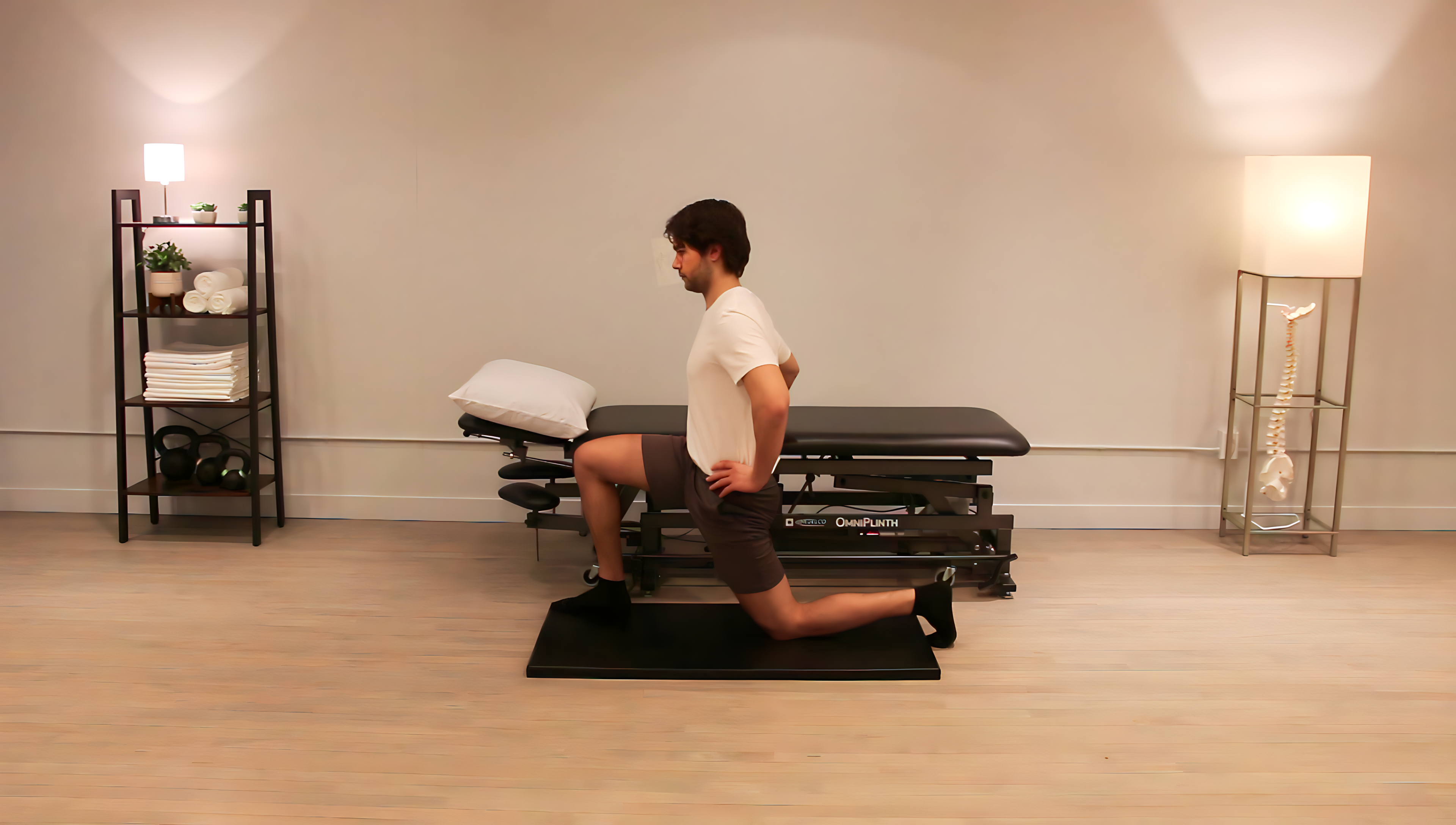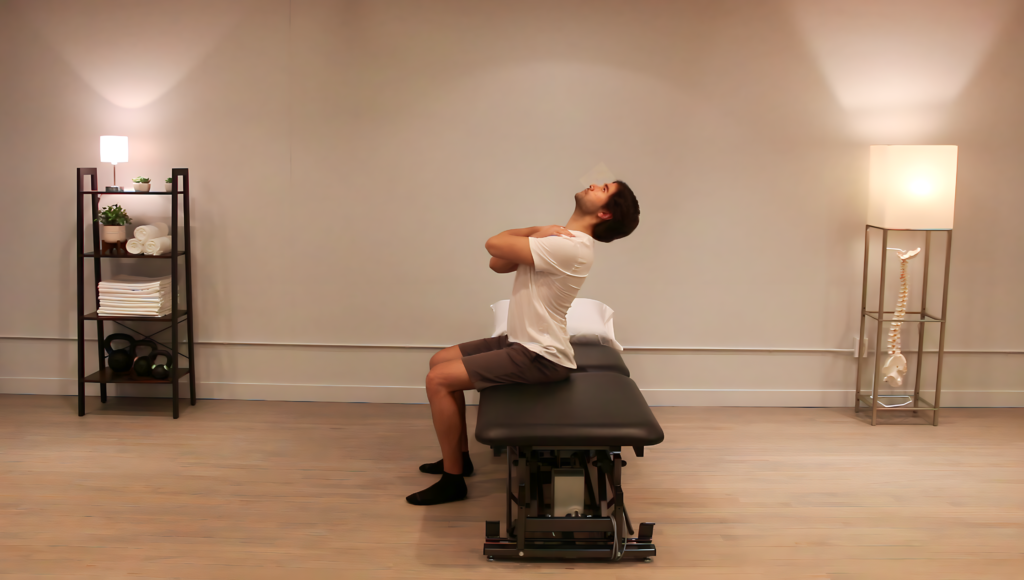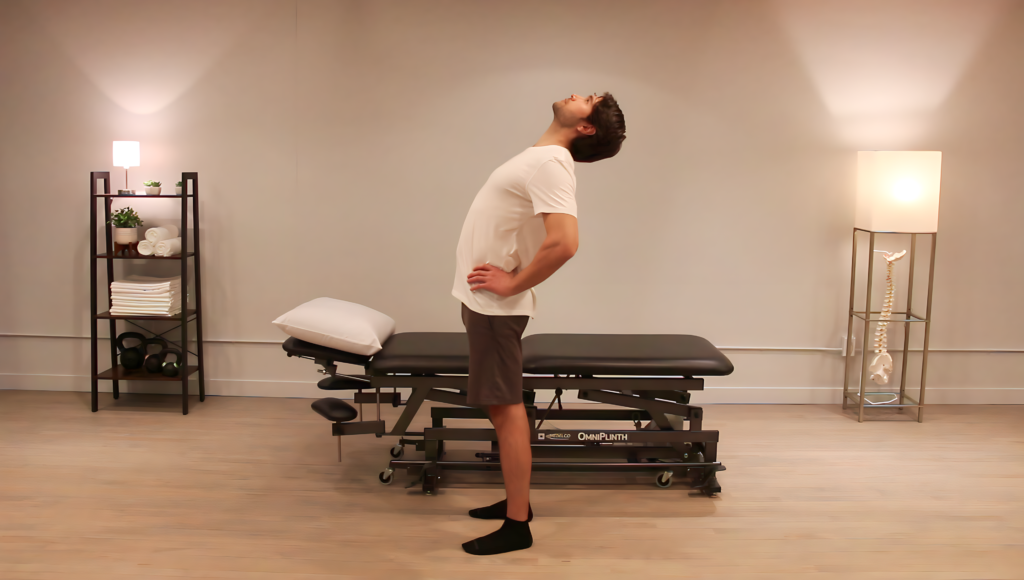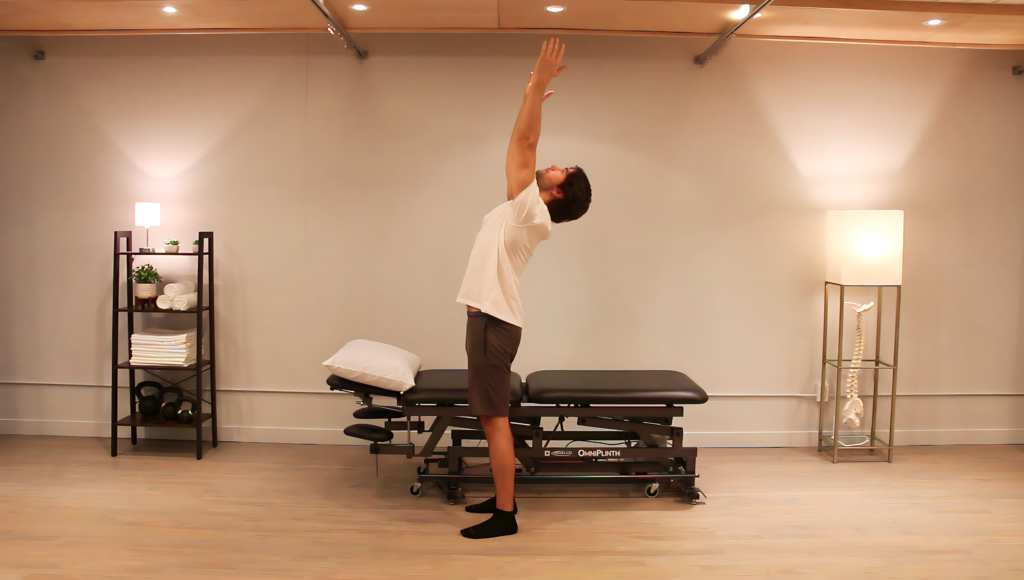
ThePainFreeBack

Your Program
Below you will find 5 sections:
Section 1 will help explain the mechanisms and systems responsible for your pain. It will also help you understand the reasoning behind the exercises and other recommendations we will make.
Section 2 will help you determine your correct exercise “dosage”. Just like with medication, it’s not only about having the right pill but taking the right amount. This section will also help you adapt your program as your back pain changes and gets better.
Section 3 is your actual exercise program. With each exercise, you will find a text description of how to properly perform the motions involved as well as picture and video demonstrations.
Section 4 will include practical recommendations on how to avoid aggravating your back and how to better manage the pain in your day-to-day life.
Section 5 will explain the connection between your brain and back pain, as well as how you can disrupt the “Pain Cycle”.
These 5 sections are your roadmap to conquering your back pain. We have no doubt that you’ve got what it takes to make a positive change in your life, but your success still depends on your effort and commitment. With consistency and only about 10 minutes a day you can be the hero in your own journey.
You’ve got this!
Section 1: Why does my back hurt?
In this section, we will help you understand why your back might be hurting.
Before we begin, it is important to remember that there are many factors that contribute to back pain and that mechanical changes such as the ones described below do not define your back. Even an MRI or an X-ray would not be able to entirely capture what you are experiencing. Accordingly, they are NOT necessary in the vast majority of back pain cases.
With that said, understanding the anatomy and mechanisms of your back can be helpful in reducing pain-related fear and promoting healthier habits.
So here is what you need to know:
Your intervertebral discs act like cushions found between each of the bones of your spine. They are designed to absorb impact and pressure like a suspension system on a bicycle or car.
When discs become irritated they can produce pain locally in your back but they can also produce what is called “referred pain”. Referred pain occurs when an irritated structure causes you to feel pain in a different location other than where the structure is located. Irritated discs can cause referred pain in your leg. Based on your answers to the quiz it sounds as though your back pain is being caused by an irritated disc.
With that said, it is important to understand that the disc is not “permanently damaged”. Rather it has entered a temporarily agitated state and just needs the right conditions to return to being pain-free.
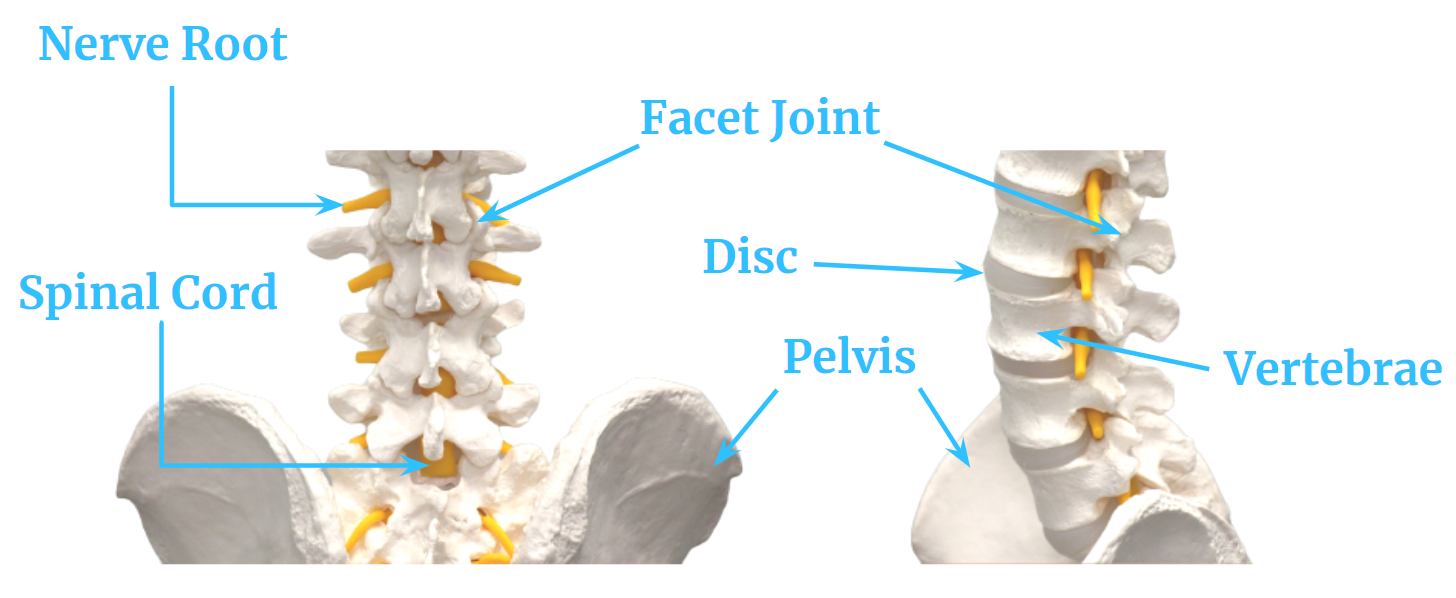
The motion of bending the spine forward is known as “flexion”. The motion of bending backward is known as “extension”.
When you move your spine into flexion, the pressure on the front of the discs increases. Moving into extension increases pressure on the back of the discs.
This means in order to overcome your back pain you need to focus on motions and activities that promote extension. This will allow for a healthier redistribution of pressure in your spine. Your exercise program and other recommendations are based on this principle.
But many daily tasks bring your spine into flexion, does this mean these tasks and activities have to be avoided completely? While you should try and avoid flexion where possible until the pain subsides, it is not something to be afraid of. Just like extension, it is a normal and safe movement of the spine.
Instead of avoiding the motion altogether, a better solution is to make sure your muscles and other joints allow you to move into flexion with less effort. This can be achieved in a number of ways such as by increasing the activation of your stomach muscles, also known as your “core”.
The information above is intended to help you understand that what you are experiencing is capable of change and that you are not destined for a life of pain. You have a perfectly normal back that just needs a little bit of extra attention.
Section 2: Exercise Dosage
In this section, we will discuss the amount of exercise and activity that is right for you.
The recommended amount of exercise will be described using 3 main terms: Volume, Frequency, and Intensity.
- Volume
- Frequency
- Intensity
![]()
Volume refers to how much of each individual exercise you should perform in a single session. Volume is measured in “repetitions” or “time”. If an exercise is measured in repetitions you repeat the movement that many times. If an exercise is measured in time, you hold the position for that amount of time.
Repetitions and time are given in “sets”. A set can be thought of as a group of repetitions. A set of repetitions should always be separated by a short break. We recommend starting with breaks that are 30-60 seconds long.
So for example, if you are doing 2 sets of 10 repetitions, you perform the exercise 10 times, rest for 1 minute, and then do another 10 repetitions for a total of 20 repetitions
![]()
Frequency refers to how many times you should complete an exercise at the recommended volume in a given amount of time. For example, you may be asked to perform the exercise at a frequency of 2 times per day, once in the morning and once before bed. If the recommended volume for this exercise was 2 sets of 10, you would do 2 sets of 10 in the morning and another 2 sets of 10 before bed.
![]()
Intensity describes what you should feel during an exercise. During some exercises you should feel your muscles get tired, in others you should feel more of a stretch. The intensity will help you know when you are doing the exercise right and how much you should be pushing yourself.
In order to get the most out of exercise you should challenge yourself, but more isn’t always better.
- Rating discomfort
- When to do less
- When to do more
![]()
Before you are active or attempt an exercise you should ask yourself: “On a scale of 1-10, how much discomfort do I feel?”
A score of 10 means you are experiencing the most discomfort you can imagine and a score of 1 means you are experiencing very little discomfort. There is no right or wrong answer to this question, what 10/10 discomfort feels like is totally up to you.
The answer to this question will help you determine if you should be doing less, or doing more of the activity/ exercise in question.

Exercise and activity should not increase pain and or discomfort by more than 2 points. This increase should also not last longer than 1 minute after completing an exercise.
If your pain increases by more than 1-2 points and/ or lasts longer than 1 minute following the exercise or activity, you have pushed too far.
If you experience an increase in pain of more than 2 points or if the increase lasts longer than a minute you should rest or attempt an exercise you know makes your back pain feel better.
Once your pain has returned to the original level you may perform this exercise again but you should modify the painful exercise by reducing the number of repetitions to avoid a similar increase in pain.
If you cannot perform more than 3 repetitions without increasing your pain, reduce the exercise intensity. Most often this will mean not moving as far in each repetition.
If you cannot find a level that feels appropriate to you after modifying the volume, and intensity stop the exercise entirely and focus on the ones you can do. Avoid the exercise for 1 week, then attempt to reintroduce the painful exercise gradually still following the rules above.
![]()
If you get relief from your pain with one of the exercises, feel free to perform that exercise as many times a day with as much or as little rest in between as you see fit. It is very hard to “overdo it” with such an exercise, but if at some point an exercise that once felt good becomes painful, return to doing an amount that felt good.
If you are able to perform an exercise with ease at the recommended amount, you should attempt to advance to the second level of that exercise. But be sure to wait at least 24 hours before making any changes. Your pain may not increase until some time after an exercise is complete.
If you get to the third level of the exercise and still find it to be easy, you should increase the volume of this exercise by doing more repetitions or sets. If you are performing more than 20 repetitions or holding a position for longer than 2 minutes and you still do not feel like you are being challenged, you should now increase the frequency.
If you increase the volume and frequency at the hardest level of an exercise and still don’t find the exercise challenging, you should continue to perform that exercise at the highest level you have the time and energy for as it will still be beneficial. However, focus on the exercises and activities that you find most helpful.
Click the “Show More” button below for a few other things you should consider…
Other things to consider…
Each recommended exercise has 3 alternative versions of varying difficulty so you can increase the difficulty of your program as your back gets better. Level 1 will typically be the easiest version of the exercise. However, you may actually find it to be more challenging than the other levels. If this is the case, stick with the level you find most challenging at the time.
Do not feel the need to progress the exercises all at once, it is okay to be doing level 1 of a certain exercise and level 3 of another. You also do not have to do all of your exercises in a row. You can do exercise 1 in the morning, and exercise 3 at your lunch break. Fit them in whenever is convenient for you.
You may also need to perform a specific level due to a limitation other than your back. For example, if you cannot perform and exercise with proper form and without pain due to a shoulder injury, choose the version you can do properly without aggravating your shoulder.
Lastly, some exercises will involve only one side of your body. On occasion, you will need to repeat the exercise on both sides, other times you will only perform the exercise on one side. The side you should perform the exercise on will be explained in the exercise description.
At the end of the day, this is your exercise program. Our recommendations are a great place to start, but you should always do what feels best for your back.
Section 3: Exercise Program
In this section, you will find the exercises that have been specifically selected to treat your back pain.
We have recommended 4 different exercises for you. Each exercise comes with a text description of the proper technique, as well as a picture and video demonstration. To view the video demonstration, simply click the picture of the exercise and a new tab will open. You can switch between difficulty levels by clicking the buttons above the included picture. The recommended Frequency, Volume, and Intensity will be provided below each exercise.
Do not attempt the exercises before understanding section 2.

Click the “Show More” button below to reveal your exercise program:
Exercise 1:
- Level 1
- Level 2
- Level 3
Prone Lying
Exercise Description: To perform the “Prone Lying” exercise, lie face down on a comfortable surface, this might be your bed or a yoga mat on the floor. Rest your head on your forearms. Breathe deeply and slowly, allowing your back to relax. Hold this position for the recommended time or the amount of time you have determined to be optimal.
- Frequency: 2-3 Times per day
- Volume: 2 sets of 60-120 seconds
- Intensity: You should feel maybe mild pressure in your back. It should not be uncomfortable or strenuous at all.
Cobra Pose
Exercise Description: To perform the “Cobra” exercise lie face down on a comfortable surface, this might be your bed or a yoga mat on the floor. Prop yourself up onto your elbows. You may decide that this is far enough and hold this position. If you feel you can push further, bring yourself up onto your hands. Breathe deeply and slowly, allowing your back to relax and arch slightly. Hold this position for the recommended time or the amount of time you have determined to be optimal.
- Frequency: 2-3 Times per day
- Volume: 5 sets of 10-20 seconds
- Intensity: You should feel maybe moderate pressure in your back. It should not be uncomfortable or strenuous at all. If it becomes to intense do not lift yourself as high.
Glute Bridge
Exercise Description: To perform The “Glute Bridge ” exercise lie face up on a comfortable surface, this might be your bed or a yoga mat on the floor. Bend your knees and bring your feet towards you until they are planted firmly. Use your legs to push your hips upwards off the ground. Hold this for 3 seconds then return to the starting position. Perform this motion for the recommended amount of repetitions or as many times as you have determined to be optimal.
- Frequency: 2-3 Times per day
- Volume: 2 sets of 60-120 seconds
- Intensity: You should feel mild pressure in your back and a moderate amount of muscular effort in your butt muscles. If it becomes overly strenuous or painful, do not lift as high.
Exercise 2:
- Level 1
- Level 2
- Level 3
Transverse Abdominis Activation
Exercise Description: To perform the “Transverse Abdominis Activation” exercise begin by lying face up with your knees bent and feet flat on a comfortable surface, this might be your bed or a yoga mat on the floor, whatever works best for you. Squeeze your stomach muscles in a way that causes your lower back to flatten against the surface you are laying on. It may be helpful to think about pulling your belly button towards your spine or to think about bracing your stomach for impact. Practice holding this contraction while still taking normal controlled breaths. Once you feel you can do this, slowly straighten your legs while still maintaining the contraction of your stomach muscles. Hold this position for 3 seconds then return your legs to the starting position and relax. Repeat this sequence the recommended amount of times or for as many repetitions as you have determined to be optimal.
- Frequency: 1 Time per day
- Volume: 3 sets of 10
- Intensity: This exercise should produce a moderate amount of muscular effort in your core and stomach muscles. It should take a fair amount of effort to maintain this tightness as you straighten your legs.
Plank
Exercise Description: To perform the “Plank” exercise, begin on a soft but firm surface like a yoga mat or carpeted floor. Prop yourself up onto your forearms with your elbows bent to 90 degrees. Lift your hips off the ground until your spine is in a neutral position. Be mindful to not let your back round in either direction. Hold this position for the recommended time or the amount of time you have determined to be optimal.
- Frequency: 1 Time per day
- Volume: 3 sets of 15-30 seconds
- Intensity: This exercise should cause your core muscles to “tighten”. It should take a substantial amount of effort to maintain this tightness without letting your back round but it should not be painful.
Superman
Exercise Description: To perform the “Superman” exercise begin by lying face down on a comfortable surface, this might be your bed or a yoga mat on the floor with your arms overhead. Lift your legs and outstretched arms off the ground. Hold this position for the recommended time or the amount of time you have determined to be optimal.
- Frequency: 1 Time per day
- Volume: 4 sets of 15-30 seconds
- Intensity: This exercise should cause your core and upper back muscles to “tighten”. It should take a substantial amount of effort to maintain this tightness without letting your back round.
Exercise 3:
- Level 1
- Level 2
- Level 3
Cat Camel
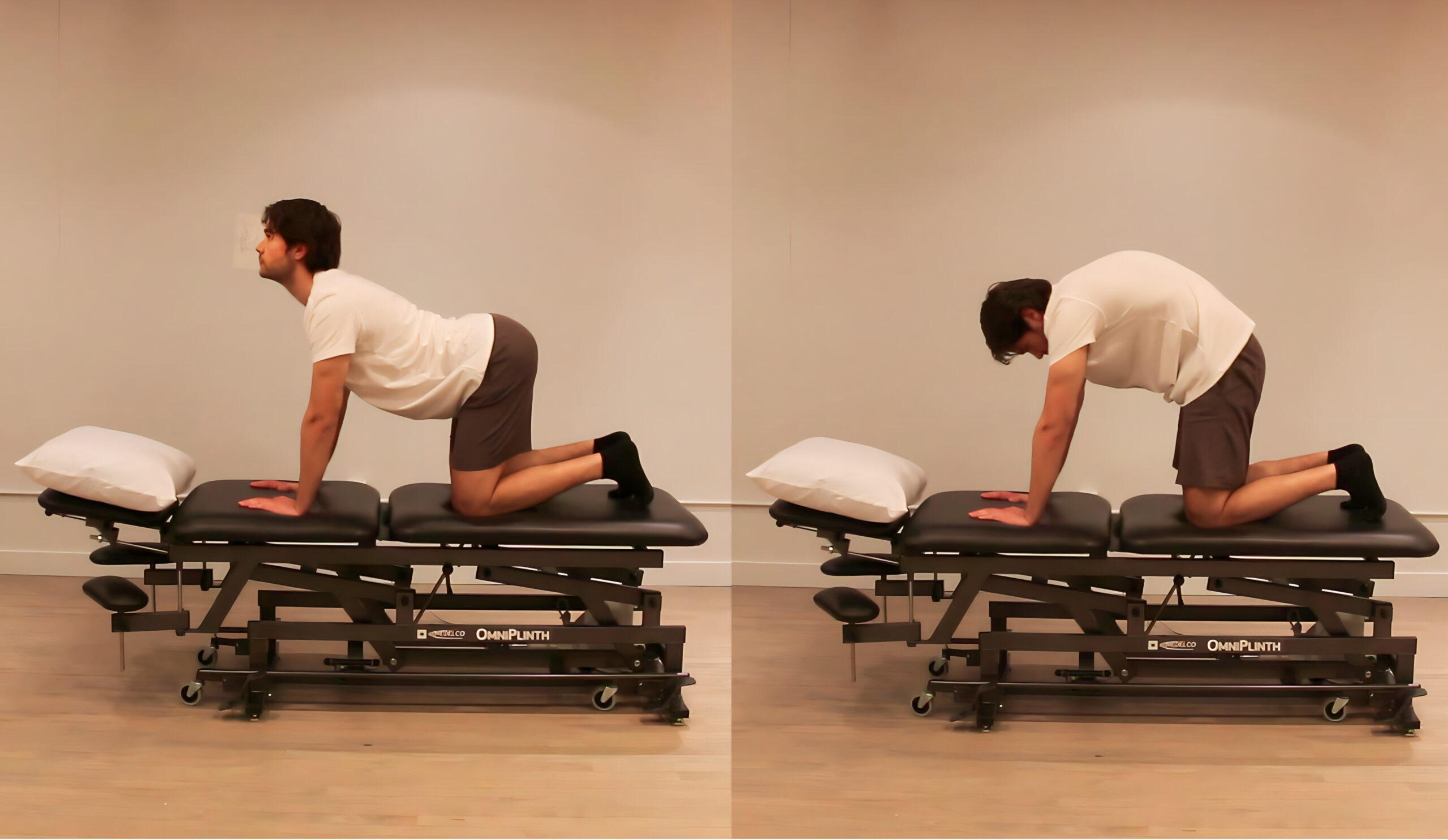 Exercise Description: To perform the “Cat Camel” exercise, begin on all fours with your hands underneath your shoulders. Raise your head and chest allowing your back to arch. Hold this position for 3 seconds. Then slowly lower your head and chest allowing your back to arch. Hold this position for 3 seconds. Repeat this sequence for the recommended amount of repetitions or as many times as you have determined to be optimal.
Exercise Description: To perform the “Cat Camel” exercise, begin on all fours with your hands underneath your shoulders. Raise your head and chest allowing your back to arch. Hold this position for 3 seconds. Then slowly lower your head and chest allowing your back to arch. Hold this position for 3 seconds. Repeat this sequence for the recommended amount of repetitions or as many times as you have determined to be optimal.
- Frequency: 2-3 Times per day
- Volume: 3 sets of 10 seconds
- Intensity: You should feel a mild stretch or pressure in your back in both positions. If it hurts or feels strenuous, do not move as far.
Standing Hip Extension
 Exercise Description: To perform the “Standing Hip Extension” exercise, begin by leaning up against a stable surface like a counter, dinner table, or chair. Lift one leg straight out behind you as far as you can without triggering pain. Repeat this motion for the recommended amount of repetitions or as many times as you have determined to be optimal.
Exercise Description: To perform the “Standing Hip Extension” exercise, begin by leaning up against a stable surface like a counter, dinner table, or chair. Lift one leg straight out behind you as far as you can without triggering pain. Repeat this motion for the recommended amount of repetitions or as many times as you have determined to be optimal.
- Frequency: 1 Time per day
- Volume: 3 sets of 10
- Intensity: You should feel the mild muscular effort in the leg you are lifting. If it hurts or feels strenuous, do not lift your leg as far.
Hip Flexor Stretch
Exercise Description: To perform the “Hip Flexor Stretch” exercise, begin in a kneeling lunge position on a firm surface. You may want to be next to a stable object to help with balance and have a pillow under your knee for comfort. Slowly lean forward while not allowing your back to arch. You can prevent your lower back from arching by squeezing your buttock muscles, or by “tilting your hips upwards”. You should feel a stretch in the front of the leg with the knee on the ground. You should not have to lunge very far to feel this stretch. If you find yourself leaning quite far you are likely arching from your lower back. Hold this position for the recommended amount of time of the amount of time you have determined to be optimal.
- Frequency: 1-2 Times per day
- Volume: 3 sets of 30 seconds
- Intensity: You should feel a moderate stretch in the front of the leg with the knee on the ground. If it is painful or strenuous, do not lean as far forward.
Exercise 4:
- Level 1
- Level 2
- Level 3
Seated Extension
Exercise Description: To perform the “Seated Extension” exercise, sit at the edge of a chair with both your feet on the ground shoulder width apart. Lift your chest upwards and lean your head and shoulders backward allowing you back to arch. Hold this for 3 seconds then return to the starting position. Perform this motion for the recommended amount of repetitions or as many times as you have determined to be optimal.
- Frequency: 2-3 Times per day
- Volume: 3 sets of 10
- Intensity: This exercise should create mild pressure in your back and create a sense of mild muscular effort in your upper back. If it feels painful or overly strenuous, do not lean as far back.
Standing Extension
Exercise Description: To perform the “Standing Extension” exercise stand with your feet shoulder-width apart. Place your hands on your hips, raise your chest upwards, and lean your head and shoulders backward allowing your back to arch. Hold this position for 3 seconds, then return to the starting position. Perform this motion for the recommended amount of repetitions or as many times as you have determined to be optimal.
- Frequency: 2-3 Times per day
- Volume: 3 sets of 10
- Intensity: This exercise should create mild pressure in your back and create a sense of mild muscular effort in your upper back. If it feels painful or overly strenuous, do not lean as far back.
Full Body Extension
Exercise Description: To perform the “Full Body Extension” exercise stand with your feet shoulder-width apart. Raise your hands overhead, raise your chest upwards, and lean your head and shoulders backward allowing your back to arch. Hold this position for 3 seconds, then return to the starting position. Perform this motion for the recommended amount of repetitions or as many times as you have determined to be optimal.
- Frequency: 2-3 Times per day
- Volume: 3 sets of 10
- Intensity: This exercise should create mild pressure in your back and create a sense of mild muscular effort in your upper back. If it feels painful or overly strenuous, do not lean as far back.
Section 4: Pain Management
In this section, we will share how you can avoid triggering your pain. We will also discuss several methods you can use to manage your pain on a day-to-day basis.
In general, activities that involve spinal flexion are most likely to aggravate your symptoms. This means things like long periods of sitting, bending over, or driving should be avoided. Extension-based activities are more likely to be tolerated by your back, but anything that triggers your back pain should be avoided even if it doesn’t involve much flexion.
Use your judgement to modify your daily routine to remain as active as possible while avoiding triggers. Continuing with your daily routine as best as you can will help your back recover faster than complete rest.
As you progress and the things that once bothered you become easier, you should reintroduce these activities and positions gradually. This will increase your back’s ability to handle these things without overwhelming it.
Click the “Show More” button below to show the specific recommendations we believe will help you the most:
Activities of Daily Living
- Sitting
- Walking
- Sleeping
- Lifting

When sitting, use a firm supportive chair to help prevent your back from rounding. A supportive chair is one designed with a backrest that conforms to the natural curve of your back and is easy to get in and out of. You can try using a rolled-up towel or lumbar support cushion placed in the small of your back if you feel the chair you use for work or in your car is not supportive enough. Switching positions frequently when sitting is a good idea regardless of what other measures you are taking. This should include interrupting long periods of sitting with 60 seconds or so of standing roughly every 20 minutes. You may want to make these periods of standing more frequent if it takes less than 20 minutes of sitting to trigger your pain.
You may also want to try keeping your feet elevated on a step with your knees bent a foot or so off the ground to reduce pressure on your back and nerves. Avoid sitting with your legs fully extended as you might when putting your feet up on a coffee table. This position increases tension on nerves and puts additional pressure on your back.
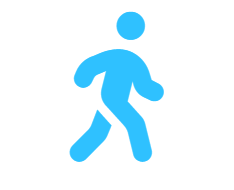
Walking and standing can be used in addition to your exercises as a way to manage pain. Using a standing desk or taking frequent walks will help bring your back into extension and ease your pain. If you are sore when walking try taking longer steps to increase the amount of extension your spine experiences, if you are getting more sore while walking do not push past the pain, be sure to take a break. However, the more walking you are able to do without increasing your symptoms the better.
![]()
The best position will be on your back with pillows under your knees to keep your back in a neutral position. Sleeping on your side is okay too if you prefer to do so, but you should place a pillow between your legs and another between your hip and shoulder to help support your spine. In your case, you may find sleeping on your stomach the most comfortable, as it places your back into extension. If you do choose to sleep on your stomach be mindful of your neck position, you should use pillows to keep your neck out of a highly rotated position.
You may also want to try some of your exercises right before bed to help you sleep pain-free.
![]()
In the early stages of recovery, avoid lifting heavy and bending forward even for something light. But, if you must, follow these steps:
- Stand close to the object, position your feet shoulder-width apart.
- Squat down and keep your back straight and your chest up.
- Tighten your core muscles, and use your legs to lift the object, keeping it close to your body.
Using an assistive reaching device can be a good strategy if your back is very sensitive to bending forward. For an activity like tying your shoes when you must bend forward, bring your foot onto an elevated surface so you do not have to reach as far down.
General Recommendations
- Exercise
- Ice and Heat
- Medication
- Other

Some of the exercises we provided may have an immediate pain-relieving effect. These exercises can be done multiple times a day as a way to control pain when you need it. Motion can have a therapeutic effect through many avenues including increasing blood flow, releasing endorphins, and promoting relaxation. To avoid “overdoing it” listen to your body, if something feels good do more of it, if it hurts do less.
![]()
Ice and heat can also help control pain. Both can be useful, but if you’re unsure, try using heat for stiff muscles and ice for sharp, acute pain. You can use both in combination, starting with ice and finishing with heat. Use each for 15-20 minutes at a time, and monitor your skin temperature to avoid burns or frostbite. Typically, you should place ice or heat directly over a sore area with a layer of cloth separating your skin from the ice or heat pack. You may also find benefit from icing and heating the surrounding areas.
![]()
There are many different types of medications used in the treatment of back pain. Some of these can be obtained over-the-counter and others will require a prescription. If this is something that interests you, a conversation with your doctor or pharmacist is a good way to determine the pharmaceutical treatment options for you. Keep in mind that medication is not necessary and is rarely enough on its own to stop back pain. Instead, when appropriate, it should be used in addition to a more comprehensive program such as this one.
![]()
Finding things that provide you with temporary relief is a very normal way to get through the day. Some ways to find temporary relief include TENS (Transcutaneous Electrical Nerve Stimulation) machines and self-massage.
TENS machines use electric current to provide temporary relief by “overriding” the pain signals sent to your back. The pads and intensity should be adjusted to the instructions of your individual machine.
Massage can help loosen your back and relieve stiffness. There are many at-home massage solutions, including electric massagers and foam rollers. Electric massagers are highly adjustable to fit your needs, however, they can be expensive. Foam rollers are a cheaper option but maybe a little more intense. A massage should feel strong but comfortable, you do not get more benefit from pushing as hard as you can.
Please also keep in mind that fancy gadgets are not necessary in the treatment of back pain and you can get better without them. But if you have the means to access them, they can be a helpful adjunct to a more comprehensive program.
Despite your best efforts, some days might just be worse than others, this is all part of the process. In such moments, adjust your routine accordingly and have confidence that you’ll have more good days soon.
Section 5: Back Pain and your Brain
In this section, you will learn about the “Pain Cycle” and what you can do to disrupt it.
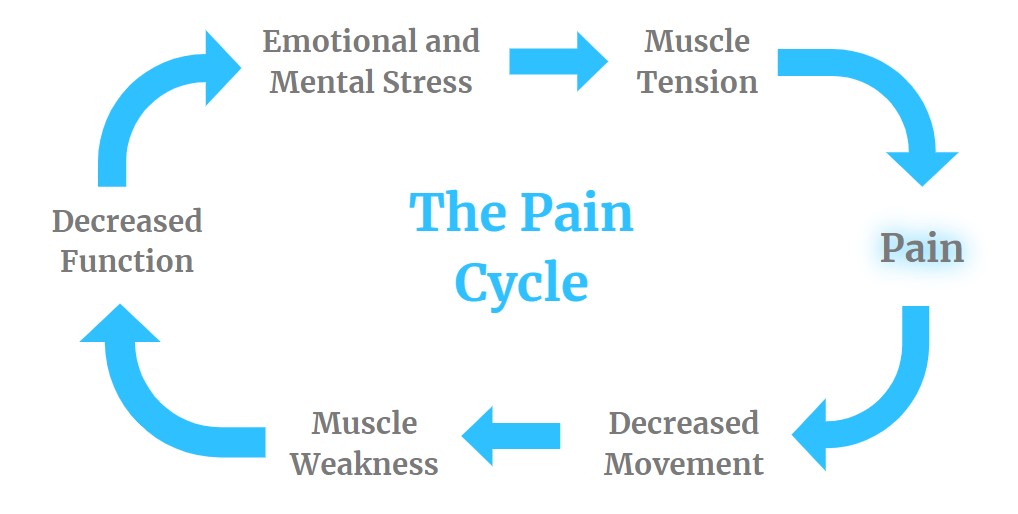
Click the “Show More” button below to reveal 3 strategies you can use to break out of the pain cycle.
Disrupting the Pain Cycle
- Body Scanning
- Breathing
- Enjoyment
![]()
With practice, a body scan can help you release muscle tension, promote relaxation, and reduce back pain by fostering a sense of self-care and deepening your mind-body connection. The point of a body scan is not necessarily to change how you feel immediately, but rather to help you understand your body’s needs.
To perform a body scan:
- Begin by finding a comfortable position. This can be standing, sitting, or laying down.
- Close your eyes and take deep controlled breaths.
- Direct your attention towards your head. Become aware of any tension, pain, or stress, you might be holding in this area. As you exhale, imagine this tension and stress leaving with your breath.
- Slowly shift your attention to your ears, then face, then neck, then shoulders, and so on working your way downwards. At each stop acknowledge any tension, pain, or stress.
- Pay extra attention to your back and problem areas. What exactly do you feel physically? How do these sensations make you feel emotionally? Take a moment to recognize that your physical sensations do not have to dictate your mood, acknowledge the sensations without judgment and breathe through them.
You should find that after a body scan, you feel more control over your emotions and you should feel a restored sense of control over your body.
![]()
Breathing is a unique aspect of our physiology as it bridges the gap between our conscious and subconscious minds. With ease, you can switch between breathing automatically and actively controlling your breath. We can take advantage of this connection and use our breath to consciously have an effect on our autonomic nervous system. Our autonomic nervous system plays a big part in regulating anxiety, muscular tension, and pain perception. Below you will find two breathing techniques you can use to have a positive effect on your autonomic nervous system:
Technique #1: The Physiological Sigh
- Inhale maximally through your nose.
- Once your lungs are full, hold your breath for 1 second and then, without exhaling, take another quick sharp inhale to fill your lungs even further.
- Slowly release this air through your mouth without forcing it.
You should feel a sense of immediate calm and relaxation after performing this breathing technique.
Technique #2: Box Breathing
- Inhale through your nose for 4 seconds.
- Hold your breath for another 4 seconds.
- Exhale for another count of 4 seconds.
Repeat this cycle as needed until you feel begin to feel a sense of calm and relaxation.
![]()
Back pain has likely decreased your ability to participate in activities that you find enjoyable. Before you are able to do these things again without any pain, it is important to find modified ways you can participate in things you enjoy without triggering pain. When you participate in activities that bring you joy, your body releases endorphins, which act as natural pain relievers. Additionally, doing things you love helps distract your mind from the pain, reducing its intensity and allowing you to remain more active.
Understandably, it can be difficult to prioritize activities we enjoy and we might be discouraged if we cannot do them to the full extent we want. But playing with your kids, going on walks, riding a bike, or doing whatever else it might be that brings you joy in whatever capacity you can manage will promote relaxation, improve your mood, and over time will help you experience an increase in function.
Limiting yourself to complete rest and avoiding any sort of movement or activity is more likely to increase your time of recovery than to shorten it.
One Last thing…
If you ever have any questions about your program or anything else related to our website, please don’t hesitate to reach out. Additionally, If you would like to share some feedback or your personal story we would also be happy to hear from you. You can reach us by clicking here.
And Remember:
